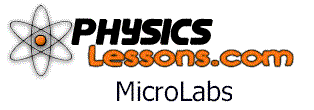 | |
| Click here to instantly bookmark MicroLabs b. |
|
Table of Contents
Waves and Sound
Light
Electricity and Magnetism
Modern Physics
Waves and Sound
23. Super Slinky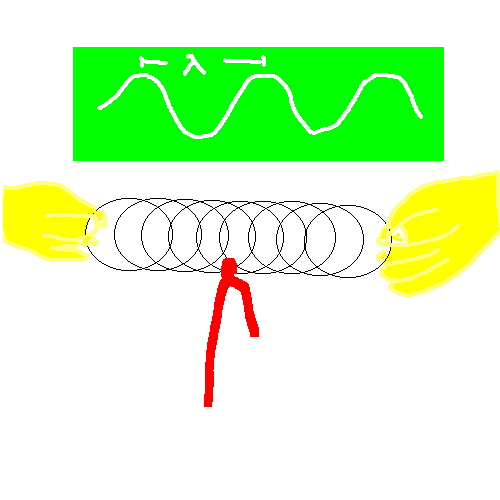 | a piece of string to the middle of a slinky. With the help of a lab partner, stretch the slinky to 1.5 m. Quickly shake your hand sideways to put a pulse of energy into the slinky. Closely watch the string. This type of wave motion is a transverse wave. Describe the motion of the string. Does the string move in a direction parallel to the length of the slinky? Tightly grasp the slinky so that your hands are about 30 cm apart. Quickly move your hands apart so that you put a compression pulse in the slinky. Describe the motion of the string when the pulse reaches it.
Materials: coil spring; 1 m of ribbon or string. (TOC) |
(TOC)24. Sound Splash
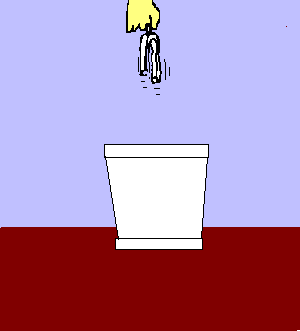 | Strike a tuning fork with a rubber hammer and dip the fork in a cup of water. What happened? Explain your results.
Materials: tuning fork; cup of water. (TOC) |
(TOC)25. Resonance
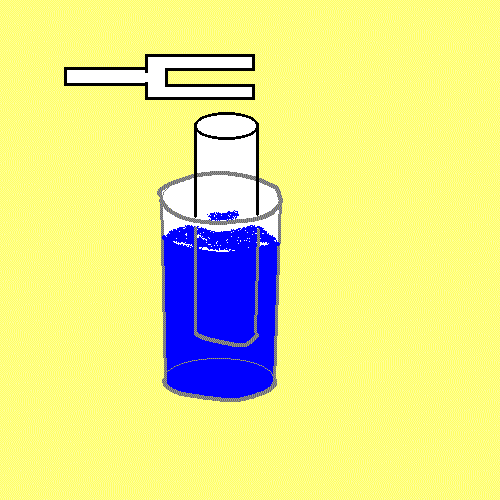 | a 500 to 550 Hz tuning fork above a clear tube, the bottom of which is closed by the water in the beaker. Raise and lower the fork and tube together. What do you hear? Explain why. Hint: the air column in the tube will resonate strongly at odd multiples of one fourth wavelengths of the fork.
Materials:500 to 550 Hz tuning fork; water; beaker; tube.
(TOC) |
(TOC)26. Wave Interaction
 | What happens to the waves coming from different directions when they meet? Do they bounce off or go through each other? Do they slow down? Use a slinky to find out by creating your own experiment. Record your procedures and results.
Material: Slinky
(TOC) |
(TOC)27. "Freak"uency
 | a meter stick and firmly hold it down against a lab table so that half the length hangs in the air. Pull the free end up several cm and release. What happened? Try again with 60 or 70 cm hanging freely. What happens to the frequency of the sound produced? Explain your results.
Material: meter stick
(TOC) |
(TOC)Light
28. Computer Color
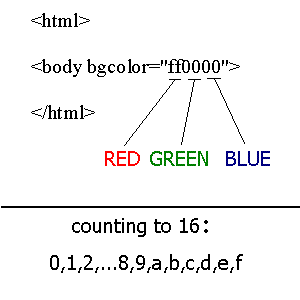 | the browser on your computer. Right-click on your browser and select View Source. Type the code shown at the left into a new file. Save the new file as color.htm. Open the color.htm file with your browser. What color is it? Repeat the experiment with the bgcolor="ffff00", and then with bgcolor="ffffff". What colors did you see in your browser? Explain.
Materials: Computer, Browser
(TOC) |
(TOC)29. SOAP SOLUTIONS
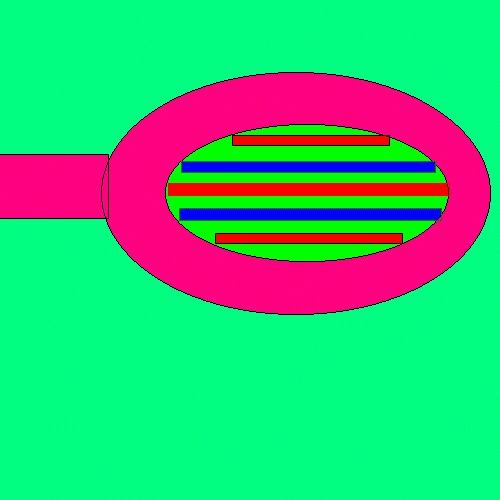 | the ring into the soap solution and hold it at a 45 degree angle to the horizontal. Look for color bands to form in horizontal stripes. Why do the bands move? Why are the bands horizontal? What type of patern would you see if you looked through the soap with a red filter? Try it. Describe your results.
Materials: Soap solution; wand; red filter.
(TOC) |
(TOC)30. Refraction
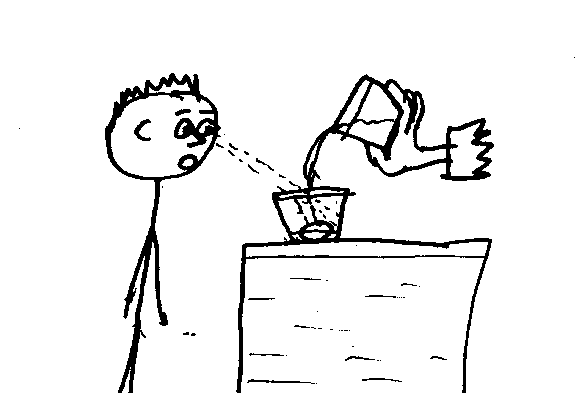 | a polystryrene cup with a coin at the bottom on a lab table. Have a lab partner stand just far enough away so that the coin is out of view. What will happen if water is poured into the cup? Try it. Describe your observations. Explain your results.
Materials: polystyrene cup; water; coin. (TOC) |
(TOC)
31. Reflection
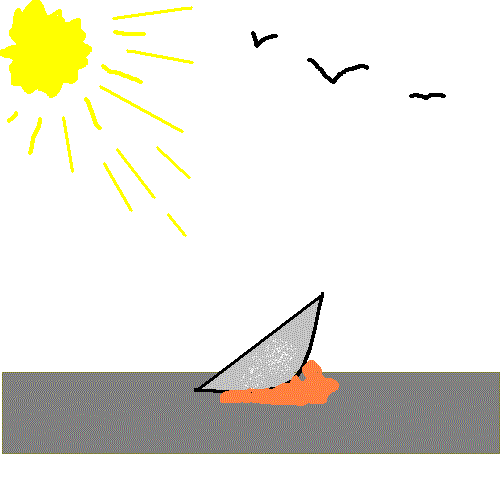 | Take a concave mirror into an area of direct sunlight. Use a piece of clay to hold the mirror steady so that the concave mirror directly faces the sun. Move your finger toward or away from the mirror in the area of reflected light to find the brightest spot(focal point). Turn the mirror so that the convex side face the sun and repeat the experiment. Record and explain your results.
Materials:concave and convex mirror; piece of clay.
(TOC) |
(TOC)32. Eye Glasses
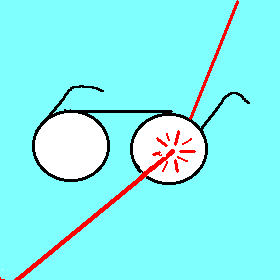 | Borrow someone's eye-glasses and see if they magnify. Are the glasses converging or diverging. How can you tell? Shine a laser through the lenses. Measure and describe what happened.
Materials: eye-glasses; laser; protractor
(TOC)
|
(TOC)33. Critical Angle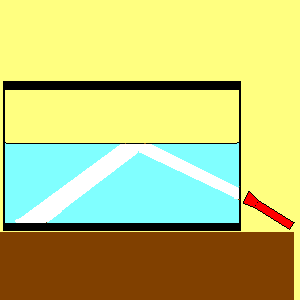 | From the side of an aquarium, shine a light beam from a flashlight or laser pointer so that it hits the surface of the water from underneath. Direct the beam so that it hits the surface at close to a 90 degree angle. Clap erasers together above the water. Does the light escape the water or does it reflect back into the water? Change the angle until no light escapes the water. What angle does this happen at?
Materials: Fish tank; flashlight or laser pointer; protractor; chalk dust
|
(TOC)34. Diffraction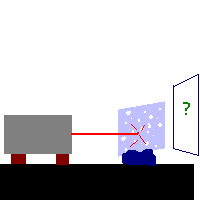 | a laser spot on a projector screen. Take a small piece of aluminum foil and poke a dozen holes in it. What do you expect will happen to the spot if you put the piece of aluminum foil in the pathway of the beam? Give it a try. What happened? Explain your results.
Materials: laser; projector screen; aluminum foil; pin.
(TOC) |
(TOC)35. Laser CD
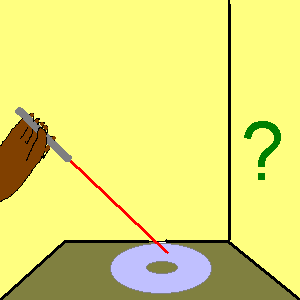 | Point a laser beam at a CD reflecting the light towards a wall and away from people. What happens? Why? Explain your results.
Materials: laser pointer; CD
(TOC) |
(TOC)
36. Polarization
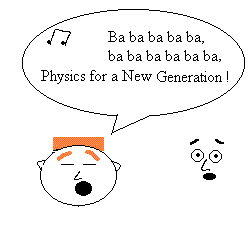 | a sheet of polarized film in front of a LCD (laptop computer). What happened? Explain your results. Materials: laser, polarized film, projector screen.
(TOC) |
(TOC)
Electricity & Magnetism
37. Charged Up
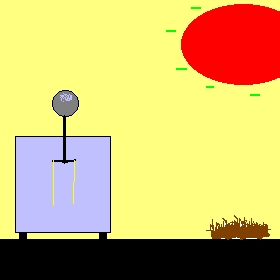 | a balloon with fur. Touch the balloon to the knob of an electroscope and watch the leaves. Describe the result. Make a drawing to explain the result. Touch the knob with your finger. Would you expect that the fur could move the leaves? Try it. Explain your results.
Materials: balloon; fur; electroscope.
(TOC) |
(TOC)38. Light it Up!
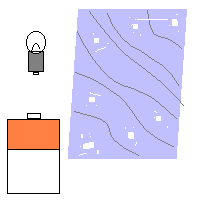 | a C cell battery and aluminum foil be used to light a miniature lamp? Give it a try. Make a sketch of the path of the electricity. Reverse the battery. Does the lamp still light up?
Materials:Miniature lamp; aluminum foil; C cell battery
(TOC) |
(TOC)39. Electronic Devices
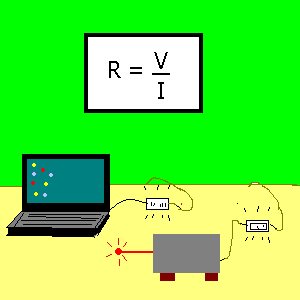 | Find three electronic devices in the classroom. Make a prediction of which one you think has the highest resistance (ohms). the current (amps) and voltage (volts) information from the devices to calculate the resistance of each device. Was your prediction accurate? Why or why not. Explain.
Materials: Three electronic devices.
(TOC) |
(TOC)40. Series Circuit
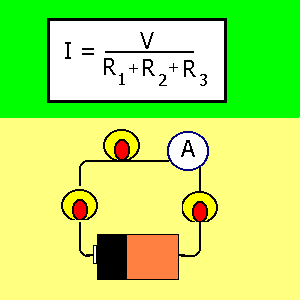 | a 1.5 V C-cell battery to a miniature lamp and an ammeter. Record the current (amps). Predict what will happen to the current when two more lamps are connected in series in the circuit. Connect the lamps. What happened to the current? Why? Explain.
Materials: C-cell battery; Conductors; Miniature Lamps; Ammeter (TOC) |
(TOC)41. Oersted's Discovery
 | a wire several times around a magnetic compass and connect the ends to a genecon generator. What will happen if the crank on the generator is turned. Try it. Turn the handle the other way. Describe your results.
Materials: Genecon; wire; compass.
(TOC) |
42. Lenz's Law
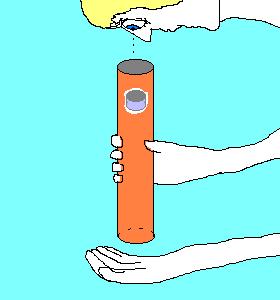 | Drop a marble through a copper pipe. Watch it fall and describe the motion the marble has as it falls through the tube. Repeat the experiment using a magnet. Describe your results. Next, drop the magnet through the plastic tube. What happened this time? Explain your results.
Materials:1 m copper pipe, 1 m PVC pipe, marble, neodymium magnet,
(TOC) |
43. Motor
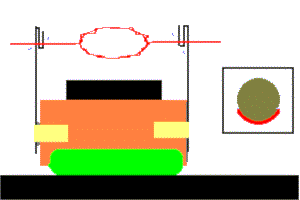 | Create a coil of wire by wrapping the enameled wire around a battery. The coil should consist of 3 or 4 turns of wire with about 1 to 2 inches of wire left over at each end. Slide the finished coil off the battery. Using sandpaper, remove the enamel from just one side of both straight segments of wire. Tape the paper clips to the ends of the battery, and then set the magnet on top of the battery. Can you make the coil spin on its own? What factors make it spin faster? Explain.
Materials: D-cell alkaline battery; Magnet wire; Ceramic Magnet; Paper clips; Masking Tape; Sand Paper, Clay.
(TOC) |
44. Speaker
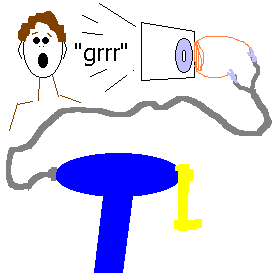 | a small coil of wire and tape it to the bottom of a plastic cup. Tape a magnet to the inside of the cup. Hook the clips from a Genecon generator to the ends of the coil. What do you think will happen when the handle of the Genecon is turned? Give it a try. Try turning the handle at different speeds. Describe what happened.
Materials: Genecon; Magnet wire; Ceramic Magnet; Plastic Cup; Tape.
(TOC) |
45. Transformer
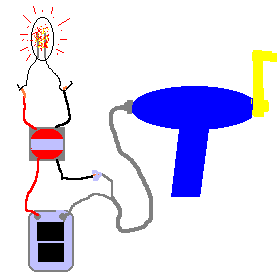 | a Genecon generator directly up to a Neon lamp. What will happen if you turn the handle? Give it a try. Next, connect the Neon lamp to the output side of a transformer. Connect the genecon (with a buzzer in series) to the input side of the transformer. What will happen if you turn the handle? Give it a try. Explain your results.
Materials: Genecon; 10:1 transformer; buzzer; Neon lamp
(TOC) |
Modern Physics
46. Solid State Electronics
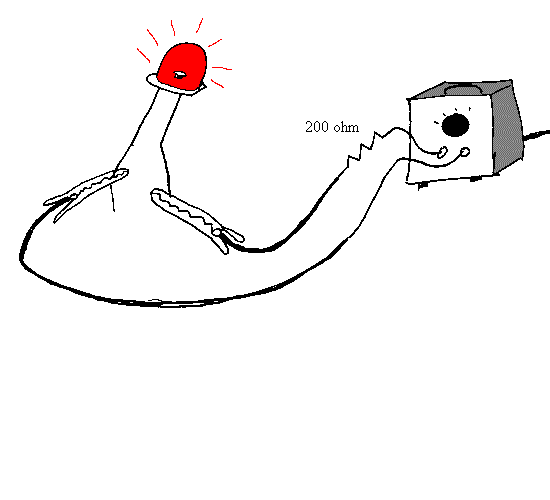 | a light-emitting diode, in series, with a 200 ohm resistor and a three volt source. What happens if you reverse the polarity of the battery. Give it a try. Describe what happened.
Materials: LED; wire; power supply; 200 ohm resitor.
(TOC) |
(TOC)47. Quantum Numbers
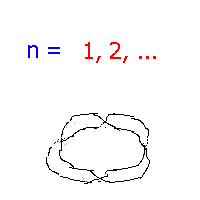 | Cut a piece of paper into long strips. Twist one strip 1 turn and staple the ends together. Twist another strip 2 turns and staple. How do these strips of paper relate to the quantum numbers of electron orbits in the hydrogen atom? Explain.
Materials: scissors; paper; stapler.
(TOC) |
(TOC)

NEWS • Demos • Physics Mail • Q-Physics • • Search • iPhysics • MicroLabs a, & b • Courseware • Discussion • Whiteboard • Shop • learn HTML • Graphic Calculator • Basic Calculator • Unit Converter • SI Prefixes • Equations • Physical Constants • Periodic Table •


























